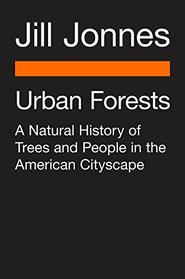Search -
Urban Forests: A Natural History of Trees and People in the American Cityscape
Urban Forests A Natural History of Trees and People in the American Cityscape
Author:
?Far-ranging and deeply researched, Urban Forests reveals the beauty and significance of the trees around us.? ?Elizabeth Kolbert, Pulitzer Prize-winning author of The Sixth Extinction — ?Jonnes extols the many contributions that trees make to city life and celebrates the men and women who stood up for America?s city trees over the past two centu... more »
Author:
?Far-ranging and deeply researched, Urban Forests reveals the beauty and significance of the trees around us.? ?Elizabeth Kolbert, Pulitzer Prize-winning author of The Sixth Extinction — ?Jonnes extols the many contributions that trees make to city life and celebrates the men and women who stood up for America?s city trees over the past two centu... more »
ISBN-13: 9780143110446
ISBN-10: 0143110446
Publication Date: 9/5/2017
Pages: 416
Edition: Reprint
Rating: ?
ISBN-10: 0143110446
Publication Date: 9/5/2017
Pages: 416
Edition: Reprint
Rating: ?
0 stars, based on 0 rating
Publisher: Penguin Books
Book Type: Paperback
Other Versions: Hardcover
Members Wishing: 3
Reviews: Amazon | Write a Review
Book Type: Paperback
Other Versions: Hardcover
Members Wishing: 3
Reviews: Amazon | Write a Review
Genres:
- History >> Americas >> United States
- Science & Math >> Biological Sciences >> Plants >> Trees
- Science & Math >> Nature & Ecology >> Natural History




